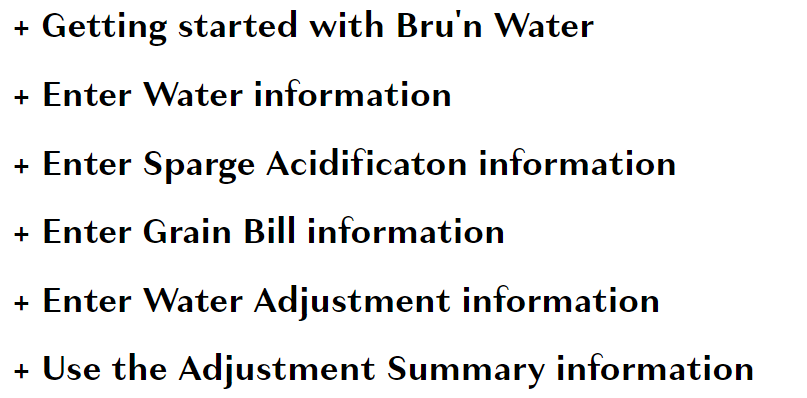RedBarnBrewery
Member
- Joined
- Sep 1, 2020
- Messages
- 18
- Reaction score
- 1
Hello all. Been brewing all grain BIAB for about 9 months now. Started by using spring water with no salt additions or lactic acid. More recently, I’ve been playing around with “EZ Water Calculator Spreadsheet 3.0”. The results have been mixed. Nothing terrible, but I’ve brewed an IPA once with spring water, again with distilled water with salts + acid. The spring water version was better…
Anyhow, this weekend I’m brewing a big stout. The recipe is as follows (adjusted for my system):
16.28 lbs UK Pale 2-Row
1.100 lbs Carastan
1.100 Crystal 120
0.550 Chocolate malt
0.550 lbs Brown malt
0.275 Roasted barley
I asked the guy at the homebrew shop (shout out to Grape & Granary in Akron, oHIGHo) for all UK type malts.
I will be brewing this with distilled water. I need help figuring out what salts to add, and lactic acid if needed. Plan to mash at 152° F for about an hour.
I will save myself the humiliation of showing what I came up with for another time.
Anyhow, this weekend I’m brewing a big stout. The recipe is as follows (adjusted for my system):
16.28 lbs UK Pale 2-Row
1.100 lbs Carastan
1.100 Crystal 120
0.550 Chocolate malt
0.550 lbs Brown malt
0.275 Roasted barley
I asked the guy at the homebrew shop (shout out to Grape & Granary in Akron, oHIGHo) for all UK type malts.
I will be brewing this with distilled water. I need help figuring out what salts to add, and lactic acid if needed. Plan to mash at 152° F for about an hour.
I will save myself the humiliation of showing what I came up with for another time.








![Craft A Brew - Safale S-04 Dry Yeast - Fermentis - English Ale Dry Yeast - For English and American Ales and Hard Apple Ciders - Ingredients for Home Brewing - Beer Making Supplies - [1 Pack]](https://m.media-amazon.com/images/I/41fVGNh6JfL._SL500_.jpg)

















































